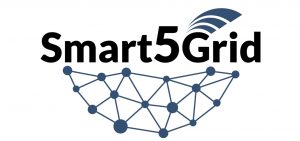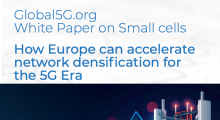Smart5Grid - Remote Inspection of Automatically Delimited Working Areas at Distribution Level
Operational safety is always the priority for the distribution company. The maintenance of Primary Substations constitutes a high-risk activity due to the proximity and manipulation of high-voltage infrastructure. Currently, strict security measures are applied to perform any action at the substation. However, it is necessary to implement a reinforcement of these measures by supporting the workers, avoiding the possibility of errors in accessing primary substations.
This use case demonstrates the capabilities of the developed Smart5Grid platform and of the Network Application for the remote inspection of automatically delimited working areas at the distribution grid level through the deployment of a private 5G network.
Demonstration setup
The Remote Inspection of Automatically Delimited Working Areas at the Distribution Level use case is performed in a rural Spanish primary substation 66kV (inside Garraf Natural Park in Barcelona). A private 5G network is deployed with edge computing capabilities, enabling really fast processing of the data coming from the sensors. These sensors for monitoring the workers are deployed inside the substation electric park, where workers must go inside mostly for maintenance performances. They consist of six 3D cameras with artificial intelligence to recognise people and their tools and portable UWB (Ultra-wideband sensors) that position the workers in space.
Architecture
The pilot’s architecture is illustrated in the picture below. User equipment, including cameras and sensors, transmits the collected information through the Customer Premises Equipment (CPE) using the n77 frequency band provided by the Spanish Ministry. The antenna and Remote Radio Unit (RRU) located in the technical booth are connected to the virtual Radio Access Network (vRAN) server. The vRAN server, in turn, is connected to both the core server and the app server, where a Kubernetes cluster is deployed. The network application is also deployed within this Kubernetes cluster, managed by Neutroon, which is responsible for 5G network management.

Before being deployed within the substation, the Network Application undergoes a testing process defined by the Smart5Grid Platform, which is located outside the substation. After being uploaded to the Open Service Repository (OSR), the Network Application is subjected to the Validation and Verification (V&V) framework. In this framework, it goes through a series of verification and validation tests to ensure it works properly before being released into the production environment. This process is entirely managed by the Network Application Controller (NAC).
The 5G advantage
The use of a 5G standalone setup and the deployment of a private 5G network in this trial enables full control over the 5G network resources, allowing precise allocation to the deployed services. This offers significant advantages such as minimal delays, over 60 Mbps Uplink data throughput, and 100% availability and reliability when compared to alternatives like Wi-Fi, which are crucial for the success of the pilot. The use of dedicated network resources makes it possible to implement a real-time service for monitoring the safety of workers, ensuring that the service is secure and isolated from other potential services, thanks to the use of a dedicated slice. Additionally, the Network Application and the Smart5Grid platform facilitate easy deployment, orchestration, and management of the services.
The Network Application
Accurate real-time positioning of workers and their tools is a critical requirement. To achieve this, the network application has been developed to process all the information coming from the positioning devices deployed at the substation. The precise positioning is achieved through two methods: (1) Portable bracelets worn by workers on their wrists, equipped with Ultra-WideBand (UWB) tags and anchors installed in the infrastructure; (2) 3D cameras placed within the working area to capture live images and detect the presence of workers. Both systems, UWB and cameras, transmit the collected data over the 5G network to a specific Network Application running on the edge. This Network Application processes the data and creates a virtual 3D security zone/ It riggers audio-visual and physical warnings when required. The Network Application continuously receives and verifies data coming from the field sensors and evaluates whether a danger alert signal should be issued. The alarm can be activated in various scenarios: i) When workers or their tools cross from the safety zone into the danger zone, ii) When workers manually press an SOS button on their bracelets, or iii) in the event that the bracelet detects a sudden fall of a worker.




